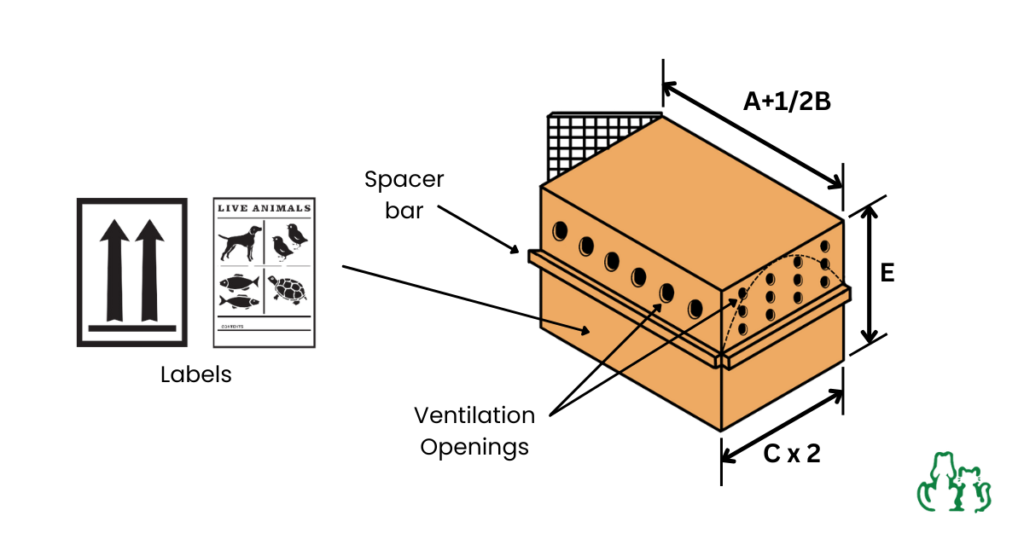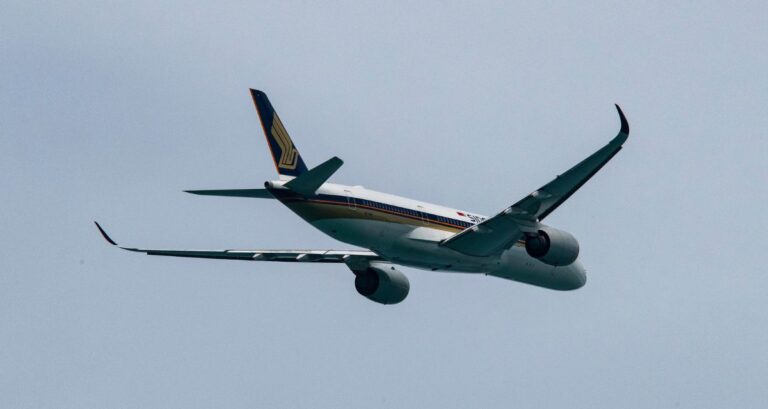Unsure which crate is best for your furry friend? Don’t worry, there are plenty of resources available to assist you!
As a pet relocation company in Singapore, we understand that selecting the right travel crate is crucial for the safety and comfort of your pet during travel. This guide will help you make an informed decision based on International Air Transport Association (IATA) and airline standards.
Why Are Travel Crate Requirements Important?
When relocating your pet, ensuring their safety and well-being is a priority. Airlines adhere to strict regulations set by IATA to ensure that pets travel safely, comfortably, and securely. These regulations dictate the appropriate size, type, and construction of travel crates to minimize stress and discomfort for pets.
Here in Singapore, many pet owners embark on international travel, and it’s essential that the crate you choose complies with both IATA standards and the specific airline’s policies. Whether your pet is flying to Australia, Europe, or North America, the right crate is a fundamental aspect of the journey.
Selecting the Right Travel Crate for Your Pet
When selecting a travel crate, it’s important to choose one that fits your pet’s size while meeting airline and IATA standards. Airlines will often check that the crate allows your pet to stand, sit, and turn around comfortably. If the crate is too small, it could cause discomfort and stress; too large, and it may become unsafe for travel.
Here’s a step-by-step guide to selecting the right crate:

1. Measure Your Pet
Properly measuring your pet is the first step in determining the correct crate size. Here’s how to measure your furry friend:
A. Length: Measure from the tip of the nose to the base of the tail. This will ensure your pet has enough room to stretch out comfortably.
B. Length of front leg: Measure from the ground up to the elbow joint.
C. Width: Measure the widest part of your pet’s body (usually across the chest or shoulders).
D. Height: While your pet is standing upright, measure from the floor to the top of the head or the tip of the ears, whichever is higher.

2. IATA-Approved Crates
Once you have measured your pet, you can determine the appropriate crate size by adding a few extra centimeters to ensure there’s enough space for your pet to move around freely.
- Crate Length: A + ½ B
- Crate Width: C x 2
- Crate Height (E): D + bedding
For snub-nosed breeds, the container should be at least 10% larger.
Note that the calculated dimensions are internal crate dimensions.
The International Air Transport Association sets specific guidelines for crates to ensure pets are safe during flights. The key features of IATA-approved crates include:
- Ventilation: The crate must have ventilation on all four sides to allow proper airflow.
- Secure Door: The door should be sturdy and lock securely to prevent any accidental openings during transport.
- Durability: The crate should be made from strong, non-collapsible materials such as hard plastic or metal.
- Absorbent Materials: Place an absorbent mat or bedding inside to help absorb any accidents and keep your pet comfortable.
Once again, these crates must have enough space for pets to sit, stand, and lie down comfortably during travel, which helps to reduce stress and discomfort.
3. Understanding Airline Requirements
While IATA standards are the foundation, each airline may have its own specific crate requirements. Singapore Airlines, for instance, has detailed guidelines for pet travel crates, which align with IATA but may have some additional specifications.
When booking a flight for your pet, make sure to review the airline’s guidelines for travel crates. Some airlines in Singapore may require crates to have additional locks, specific dimensions, or even a designated space for water containers inside the crate. Double-checking these details will ensure a smooth and hassle-free journey for your pet.
Now that you’ve selected the correct crate, it’s important to prepare it properly before your pet’s trip. You may also let the pet relocation specialist handling your pets assist you on this. Here’s some key steps to consider:
Label the Crate: Include your pet’s name, “Live Animal” and “This Way Up” tags placed on two opposite sides, and any other relevant details. Many airlines require clear labeling in case of emergencies.
Familiarize Your Pet with the Crate: One of the most stressful aspects of travel for pets can be the unfamiliarity of the crate. Start by introducing the crate a few weeks before travel to allow your pet time to get comfortable with it. Place their favorite toys or bedding inside to create a positive association.
Hydration and Feeding: Attach a water bottle or bowl to the inside of the crate to ensure your pet stays hydrated during the flight. Avoid feeding your pet a large meal before travel, but ensure they have access to water throughout the journey. Animals typically do not need extra feeding within 12 hours after dispatch. However, you can attach food to the travel crate to accommodate any potential delays.
Travel Crate Requirements FAQ
1. How do I know if my crate is airline-approved?
Most IATA-approved crates will specify this on the packaging or in the product description. Look for crates that explicitly mention compliance with IATA standards. Additionally, check with your airline to confirm any specific requirements.
2. Can I use a soft-sided crate for air travel?
Soft-sided crates are typically not allowed for international travel. Most airlines require hard-sided crates to ensure the safety of pets during flights. Soft-sided crates may be permissible for smaller pets traveling in the cabin, but this depends on the airline’s policy.
3. What are the common mistakes to avoid when selecting a travel crate?
Choosing a crate that is too small or lacks adequate ventilation are two of the most common mistakes. Always double-check the airline’s requirements and measure your pet accurately to ensure their comfort and safety.
Conclusion
Choosing the right travel crate is a vital part of your pet’s relocation journey. By following the IATA guidelines and ensuring your crate complies with your airline’s standards, you can provide a safe and comfortable travel experience for your pet.
If you’re unsure about which crate to select, our Singapore-based pet relocation team is here to help guide you through the process. We’ll ensure that your pet’s journey is smooth and stress-free from start to finish.
For more information on pet travel requirements in Singapore or to get help selecting the right travel crate, contact us today!
Ready to move with your furbaby?
GET A FREE QUOTE FROM US!


